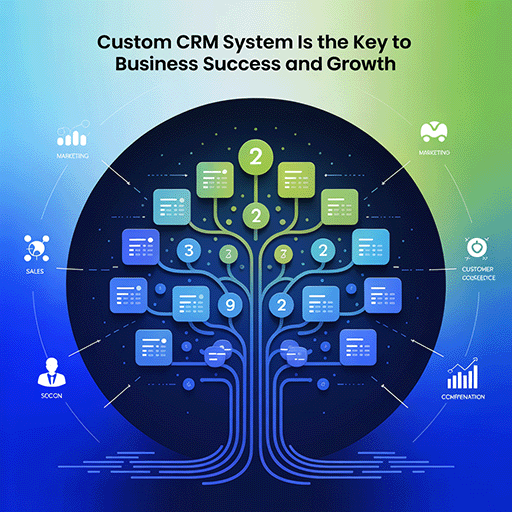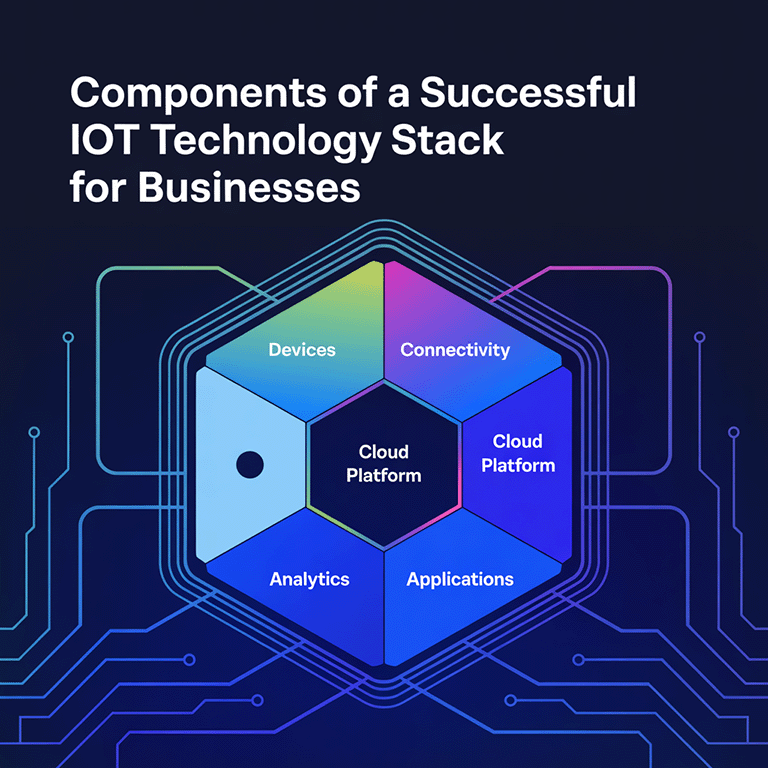What do you need to build a user-friendly and profitable software application? The thought of hiring a seasoned software development team to handle this task will probably cross your mind at some point. But you can actually develop such full-fledged applications without any programming experience.
In this piece, we have explained what no-code software development means and how it works, expanded on its core advantages and limitations, and handpicked the best no-code platforms to help you pick the right approach to your upcoming project.
What Is No-Code Development?
No-code software development is an approach that lets users with no technical skills build full-fledged software solutions. Instead of hiring a team of specialists, you can benefit from one of the no-code development platforms to create innovative products.
With various intuitive no-code platforms out there, you can just drag-and-drop pre-configured software components with the help of a visual builder to develop your application.

Such platforms take the fundamentals of code and transform them into a drag-and-drop solution, so it’s much easier to create profitable products without any programming skills.
Using these platforms, you can customize your solution to fit your brand’s style and check how it looks on mobile and desktop. You can always browse through numerous color schemes and fonts and upload any custom items for effective branding.
No-code is a lifesaver for small businesses and startups that need to develop an app or build a website with limited funds and resources. This technology also lets engineers dedicate their skills towards more feature-rich and sophisticated projects, while non-technical users can turn their own ambitious ideas into functioning products.
Solutions You Can Build With No-Code
No-code solutions are great if you are limited in resources and want to launch your product as fast as possible without the need to write code. Have a look at the most common types of solutions you can build using no-code platforms:
-
Back-Office Solutions
With all the data and processes business owners have to manage, it’s vital to have reliable tools to optimize the internal operations of any business. From human resources to accounting, back-office applications are an amazing way to administer operations for internal use.

B-Cephal is a no-code back-office platform for the financial sector. With detailed reports and analytics, users can process invoices, control profitability, and forecast their revenue. This no-code solution also gathers data from multiple sources such as supplier invoices and dispute cases.
-
Web Applications
Whether you run an e-commerce business or own a promising banking solution, no-code software development allows you to come up with customizable web applications to provide your users with the best customer experience. Using pre-configured connections between modules, you can design a unique web app resonating with your brand.
Mailchimp is a no-code marketing web app that helps small businesses grow by providing users with the best ways to analyze their audience and collect meaningful customer data. Using this platform, you can launch a website and marketing campaigns, conduct surveys, and improve your content with an AI-powered assistant.
-
Mobile Applications
No-code makes app development faster and helps non-technical users build sophisticated iOS and Android applications. Such app builders enable users to customize their solution with hundreds of templates, add audio and video content, and choose the most suitable monetization model.

Benefits of No-Code Development
-
Simple Prototyping
No-code development allows small businesses and startups to create a cost-efficient prototype as fast as possible to showcase the project’s main idea and value proposition to potential investors.
As the application evolves and more advanced features like location tracking or voice search are needed, business owners can consider hiring a software development team to enhance their solution. But still, some no-code platforms provide users with such features as multilingual support, dynamic content, and complex payment models.
-
Accelerated Time-to-Market
To get a full-code app built by a team of seasoned developers, you will need 4-5 months until it’s ready for public release. With pre-configured modules and automated testing, you can speed up the development process and save funds.
-
Reduced Production Costs
It’s possible to use dynamic web content to personalize your offers, create custom landing pages, and come up with eye-catching visuals without hiring a team of back-end and front-end developers.
While a simple custom-built app may cost between $7000 and $15 000, for a complicated full-code application like Uber you will have to pay $70 000+. If you want to cut software development costs by up to 80%, no-code is a great option for your needs.
Using no-code development platforms, you will pay a monthly subscription. Your fee will depend on the number of your team members or end-users.
-
Meeting Market Demands
With no-code development, it’s easier to respond to changing market conditions, business objectives, and customer demands. You can change the functionality and design of your product or enrich it with new features within a few hours.
-
Tested Features
It’s much easier to benefit from time-tested features and templates that have already been used. These templates work across various platforms, providing a hassle-free user experience.
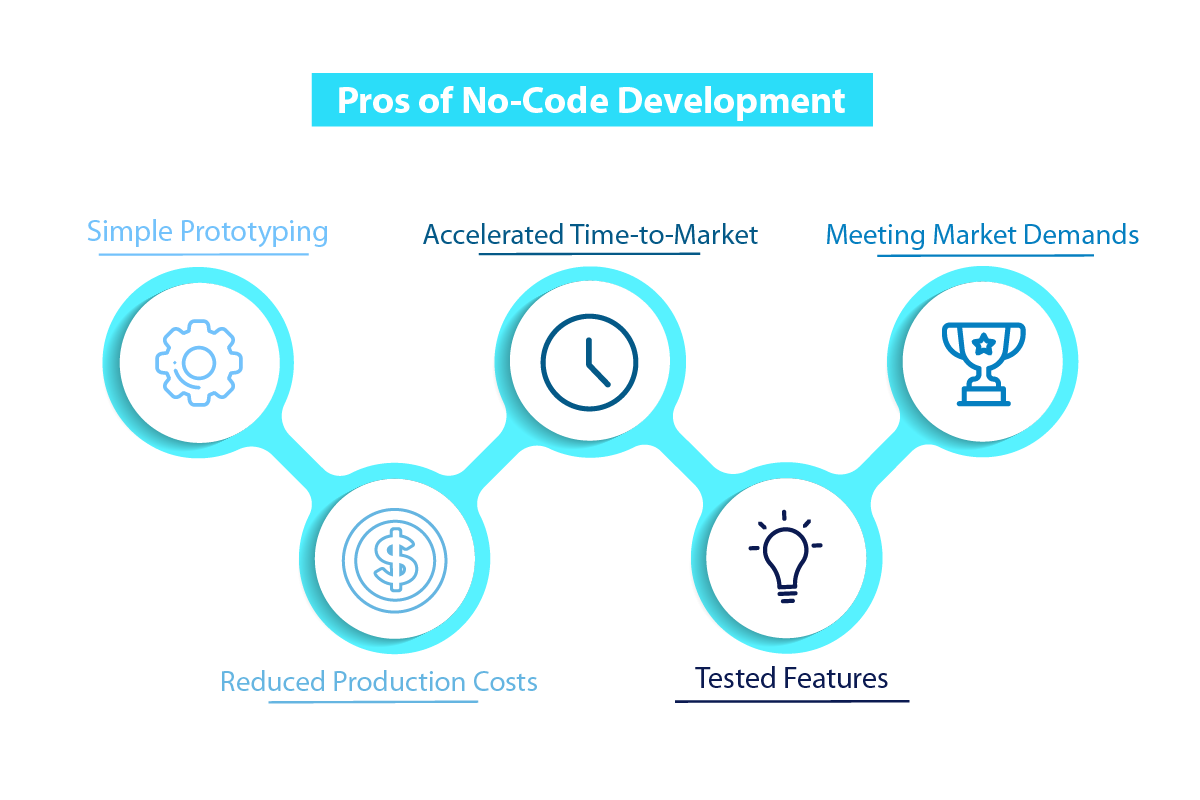
Limitations of No-Code Development
-
Security Issues
Going for this approach, you depend on your platform, so it might lead to a number of potential security issues. You can’t manage your tech stack and don’t know your solution inside and out. If your platform suffers a security breach or exits the market, your software is at risk as well.
To minimize these risks, make sure you choose a reliable platform so that you can reap all the benefits of no-code technology. You can check out customers’ reviews, evaluate security requirements, and ensure you can scale your solution with the platform you want to choose.
No- or low-code platforms may also offer some of the following security features:
- Platform security audits and compliance certifications to detect and eliminate any vulnerabilities in platforms.
- Single sign-on enables users to access multiple platforms and shared environments with a single set of credentials. It reduces password fatigue and prevents data breaches.
- Platform access control helps you monitor how your business records are managed and protect sensitive data.
- Application control audits to detect trusted software, get rid of unwanted applications, and enhance your network stability.
- Secure code using plugins. Seasoned developers can build plugins to extend the platforms’ capabilities. Then, these secure components can be used by citizen developers with a no-code experience.
- Secure API endpoints to minimize the risks of business loss, reputation damage, and compliance issues. No-code platforms make it happen by incorporating one-way password hashing, strong authentication, and validated input.
-
Limited Customization
Even though no-code platforms offer lots of templates to build user-friendly software, you might be limited in what you can create. If your solution requires an advanced and unique design to suit your customers’ needs, you will need to match your business goals to platforms’ capabilities.
-
Lack of Complex Functionality
While no-code is a great option to develop solutions with simple functionality, you can face some challenges deploying more feature-rich products to meet the goals of bigger companies.
Compare various platforms to make sure the option you choose can provide the scalability and flexibility you are looking for.
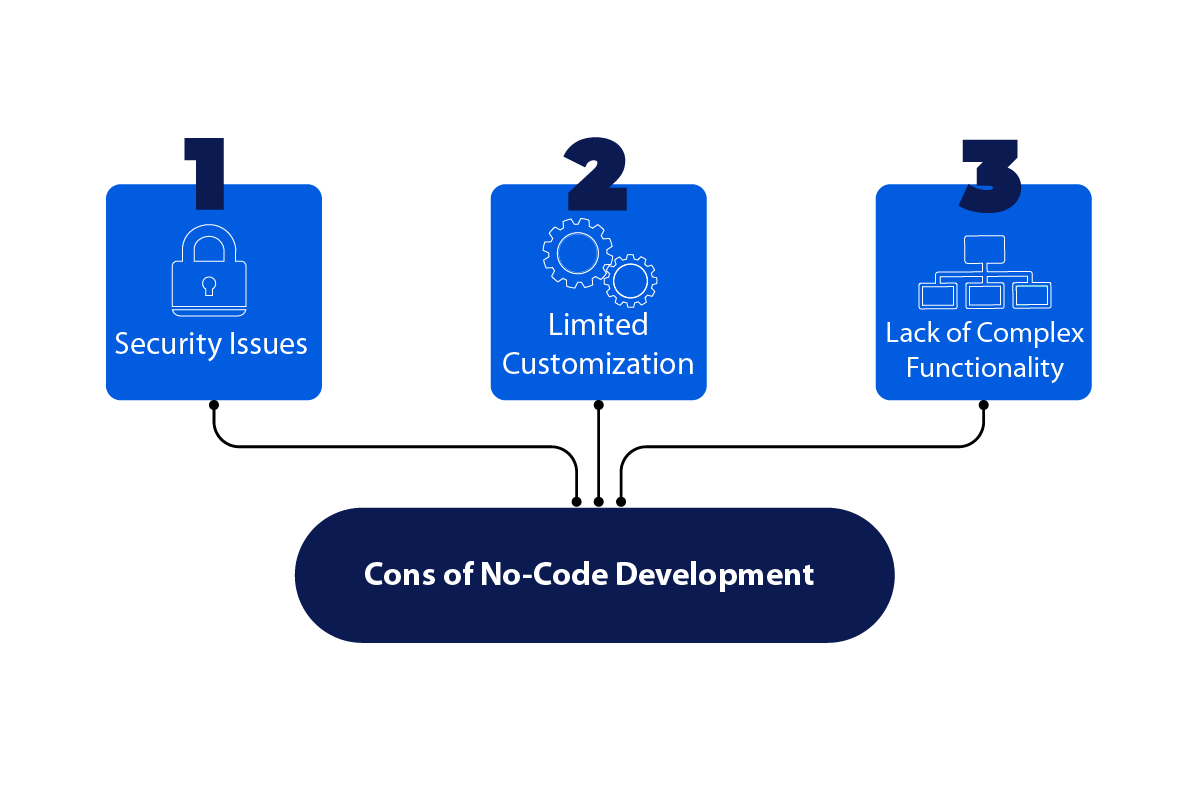
Examples of No-Code Platforms to Use in 2022
- AppSheet is a no-code development platform that enables people with no technical skills to create multi-platform apps loved by users.
From agriculture and education to healthcare and manufacturing, this platform provides numerous industries with rich data collection, location services, process automation, and the power of machine learning.
You can cooperate with teammates, store data securely, use interactive dashboards, and benefit from detailed reports. Using this platform, you can also build mobile or desktop apps that work offline, scan barcodes, accept signatures, and send emails.
Pricing: $5-$10 for a user per month. An Enterprise plan cost is available on request.
- Nutshell enables users to build highly customizable apps tailored to the specific needs of any industry. You can develop solutions to capture live data, build automated processes, and come up with informative one-click reports.
It’s possible to build apps yourself with the help of a Customer Success team, use an extensive library of pre-configured templates, or have your apps developed by Nutshell’s builders.
You can always use quick-start tutorials to make sure your audience enjoys a seamless experience across different devices and platforms.
Pricing: plan costs are available on request.
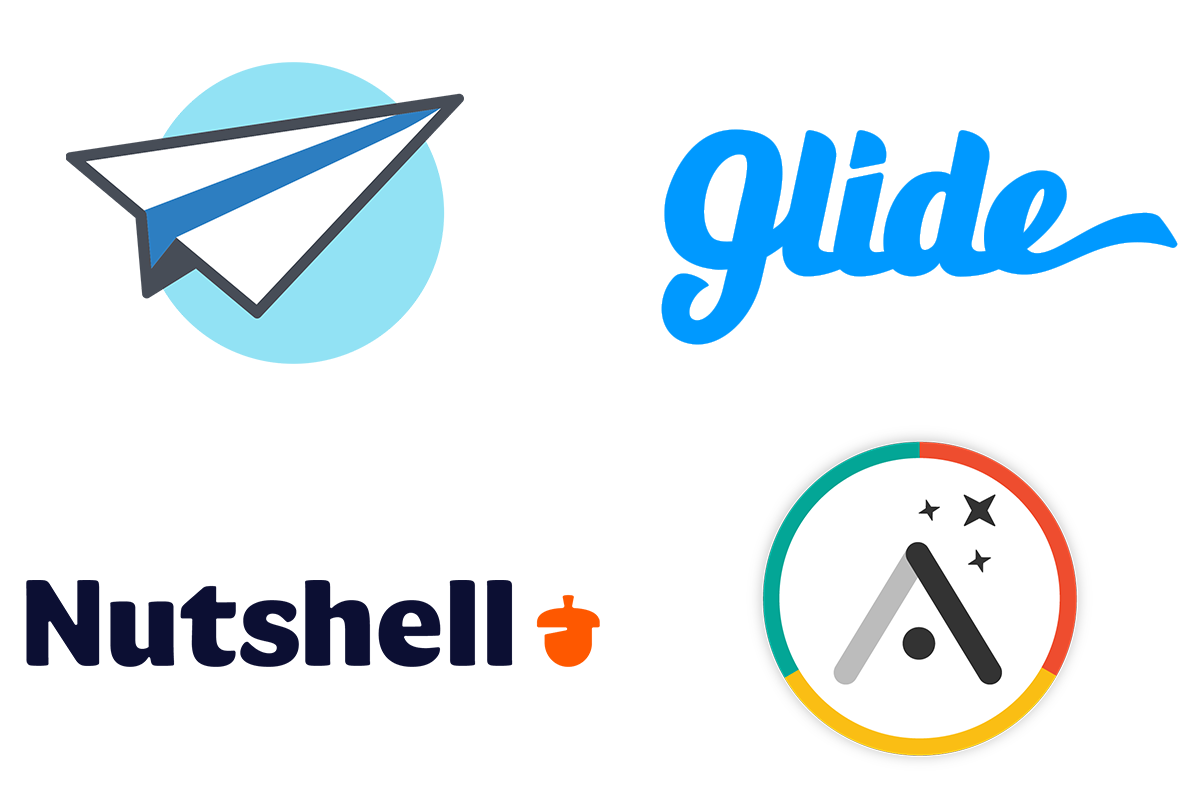
- Adalo provides users with the opportunity to choose from 25+ drag-and-drop components like lists, forms, charts, and buttons to build responsive apps.
You can link pages with eye-catching animations, add customizable push notifications, manage user data, and connect several apps with a shared database.
There are lots of informative tutorials available so that you can understand how to design your database, work with audio and data, create custom lists, and process payments securely.
Pricing: $50-$200 per month. A free Explore plan is also available.
- Glide is a no-code platform that helps users with basic spreadsheet skills create profitable and user-friendly solutions. You can connect a Google Sheet with your data or start building your product from scratch.
It’s also possible to pick a spreadsheet you already use and the platform will generate a basic app or web page to help you get started faster. With appealing themes, customizable user profiles, action-packed menus, and efficient overlays, it’s much easier to build incredible solutions for any industry.
Pricing: $32-$40 per month. A free plan is also available. An Enterprise plan cost is available on request.
Wrapping Up
No-code development is a fantastic option for businesses with limited resources. With this approach, non-technical users can create responsive and profitable apps to promote their business, gain engagement, and communicate with customers.
But still, no-code can’t replace developers’ knowledge and expertise to create more feature-rich and secure solutions. If your business needs custom-built software products or you require more details to make a final decision, feel free to get in touch with us and we will be happy to help you!


